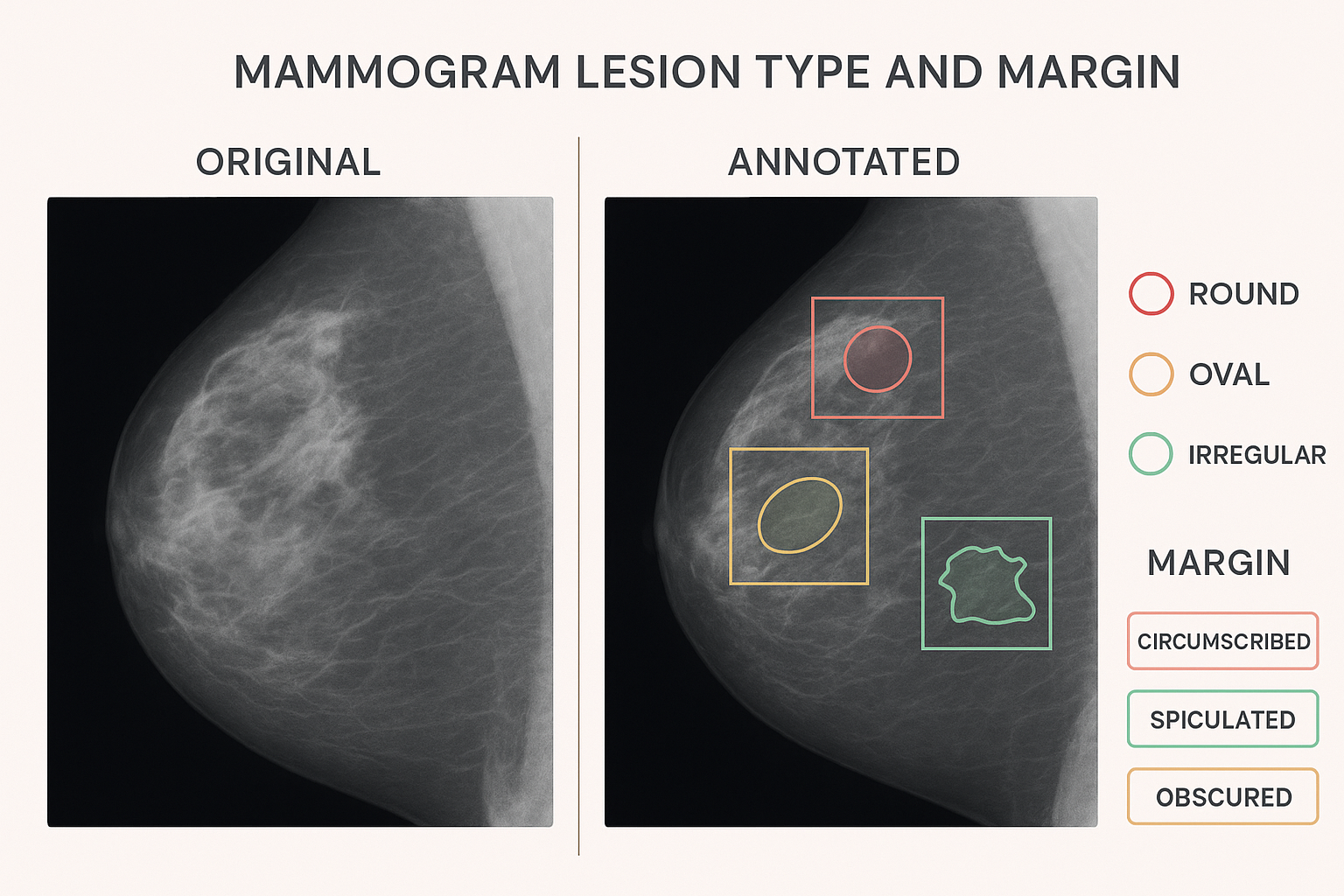Early and accurate detection remains the cornerstone of effective breast cancer diagnosis. In mammography, subtle differences in lesion shape (round, oval, irregular) and margins (circumscribed, obscured, spiculated) provide critical clues for identifying potential malignancies.
As artificial intelligence continues to transform medical imaging, the reliability of AI models depends heavily on the quality of image annotation and labeling that trains them. This is where Marteck Solutions plays a pivotal role.
At Marteck Solutions, we focus on creating expert-validated annotations that enhance AI understanding of complex mammographic features. Our radiologist-guided workflows ensure every annotation reflects real-world diagnostic precision—helping AI systems not only detect lesions but interpret them with clinical accuracy.
How Marteck Solutions Enhances Mammography AI Development
- Expert-Reviewed Lesion Annotation: Each image is annotated by trained professionals under the supervision of certified radiologists to ensure diagnostic relevance and consistency.
- Precise Shape and Margin Classification: We capture fine-grained details of lesion morphology, enabling algorithms to distinguish between subtle variations that matter in clinical decision-making.
- Standardized Annotation Protocols: Our structured workflows ensure consistency across large imaging volumes—building AI models that are robust, reliable, and scalable.
- Collaborative Approach: We work closely with research teams and medical AI developers to align annotation strategies with their model training objectives and diagnostic goals.
- Secure & Confidential Processes: Data privacy and compliance are built into every step, ensuring that sensitive medical information remains protected.
With the right combination of domain expertise and precision-driven annotation, Marteck Solutions empowers AI systems to deliver more accurate breast cancer detection—bridging the gap between technology and real-world clinical insight.
